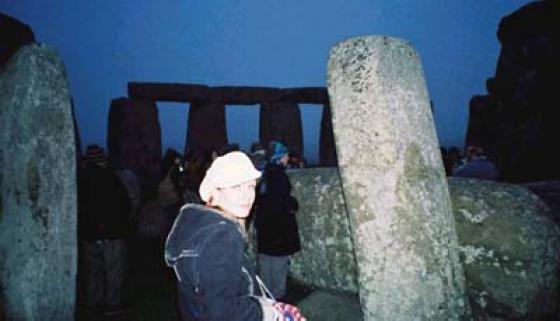In answer to some of the previous postings (in no particular order):
Quoting Gibson again:
"It is much more likely that these architectural devices were used because that was the tradition within which Stonehenge’s builders were working."
If the tradition was to make strong interloccking lintel structures out of wood, what could have been the purpose of such wooden structures if not to provide strength to support something?
========================================
In order to create a Newgrange type experience, I would have thought both walls and a roof would be necessary....
========================================
The ring of lintels should have provided extra strength to the entire structure causing the stones to remain standing for perhaps millenia. However, many individual standing stones have remained standing fo just as long despite the depth to which they penetrate into the ground being relatively shallow (e.g. those at Avebury have an average depth of 16 inches so I believe). The depth of the stones at Stonehenge is several feet. The question raised by Atkinson (among others) is why so many of the stones at Stonehenge have fallen. Intentional damage by Romans or early Christians has been mentioned. However, there is some evidence that at least one of the stones fell as early as 800 years after the outer stone circle was completed (stone 8). Apparently there is no Z hole opposite stone 8 and the Z holes were dug near to the time that Stonehenge was abandoned. It has been suggested that there is no Z hole 8 as stone 8 had already fallen covering the location where the hole should have been dug.
One may ask what this has to do with a roof. One must remember that the extra forces placed on the stones by the roof (especially during periods of inclement weather) would have been considerable and may have led to some stones falling over at a much earlier time than should otherwise have been the case.
==============================================
I have already mentioned the Bruce Bedlam structure in the first posting in this thread, but I will say this
(a) He has not acknowledged Vayson de Predanne who published an article where a roof on Stonehenge was considered over 70 years ago.
(b) His model does not fit the known archaelogical results
(c) He advocates the use of technologies which simply did not exist at the time
I could go on....
Happy New Year to all reading this thread!
Chris W
